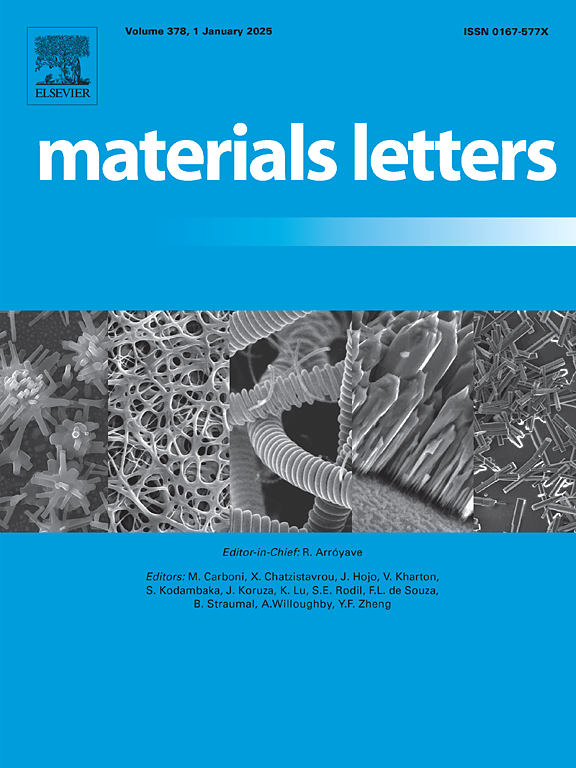烧结温度对凝胶铸造PMNT陶瓷电性能的影响
IF 2.7
4区 材料科学
Q3 MATERIALS SCIENCE, MULTIDISCIPLINARY
引用次数: 0
摘要
研究了烧结温度和分散剂对琼脂凝胶浇铸法制备Pb(Mg1/3Nb2/3)0.65Ti0.35O3 (PMNT)陶瓷性能的影响。聚丙烯酸钠盐是铸造PMNT陶瓷的有效分散剂。分别在1180、1200、1220、1240和1260℃下烧结胶铸PMNT绿体。在所有陶瓷中都观察到纯钙钛矿结构。在1200℃下烧结的PMNT陶瓷表现出最好的铁电和压电性能。随后采用最佳烧结温度烧结凹形PMNT陶瓷。对凹形陶瓷施加冲击,并记录相应的输出电压。输出电压与输入冲击力呈指数关系。我们相信这些发现将为复杂形状压电材料的制作提供更多的便利。本文章由计算机程序翻译,如有差异,请以英文原文为准。

Effects of sintering temperature on electrical properties of PMNT ceramics formed by gel-casting
This study investigates effects of sintering temperature and dispersant on properties of Pb(Mg1/3Nb2/3)0.65Ti0.35O3 (PMNT) ceramics formed by agar gel-casting method. Poly(acrylic acid sodium salt) was found to be an effective dispersant for casting PMNT ceramics. Gelcast PMNT green bodies were sintered at 1180, 1200, 1220, 1240 and 1260 °C. Pure perovskite structure is observed in all ceramics. The PMNT ceramics sintered at 1200 °C exhibit the best ferroelectric and piezoelectric properties. An optimum sintering temperature was subsequently used for sintering concave-shaped PMNT ceramics. Concave-shaped ceramics were subjected to applied impact force and corresponding output voltages were recorded. An exponential relation between output voltage and input impact force is observed. We believe that the obtained findings will promote more convenience for fabricating complex-shaped piezoelectric materials.
求助全文
通过发布文献求助,成功后即可免费获取论文全文。
去求助
来源期刊

Materials Letters
工程技术-材料科学:综合
CiteScore
5.60
自引率
3.30%
发文量
1948
审稿时长
50 days
期刊介绍:
Materials Letters has an open access mirror journal Materials Letters: X, sharing the same aims and scope, editorial team, submission system and rigorous peer review.
Materials Letters is dedicated to publishing novel, cutting edge reports of broad interest to the materials community. The journal provides a forum for materials scientists and engineers, physicists, and chemists to rapidly communicate on the most important topics in the field of materials.
Contributions include, but are not limited to, a variety of topics such as:
• Materials - Metals and alloys, amorphous solids, ceramics, composites, polymers, semiconductors
• Applications - Structural, opto-electronic, magnetic, medical, MEMS, sensors, smart
• Characterization - Analytical, microscopy, scanning probes, nanoscopic, optical, electrical, magnetic, acoustic, spectroscopic, diffraction
• Novel Materials - Micro and nanostructures (nanowires, nanotubes, nanoparticles), nanocomposites, thin films, superlattices, quantum dots.
• Processing - Crystal growth, thin film processing, sol-gel processing, mechanical processing, assembly, nanocrystalline processing.
• Properties - Mechanical, magnetic, optical, electrical, ferroelectric, thermal, interfacial, transport, thermodynamic
• Synthesis - Quenching, solid state, solidification, solution synthesis, vapor deposition, high pressure, explosive
 求助内容:
求助内容: 应助结果提醒方式:
应助结果提醒方式:


